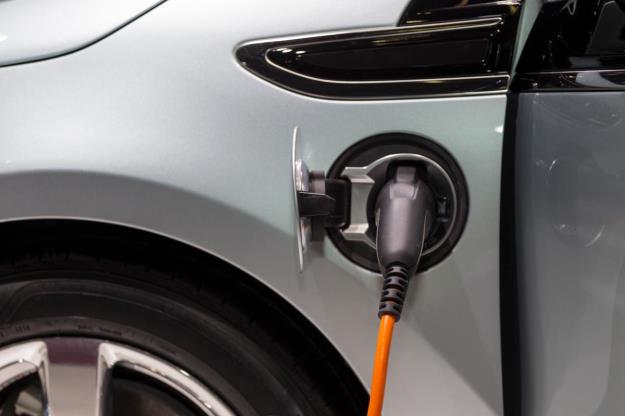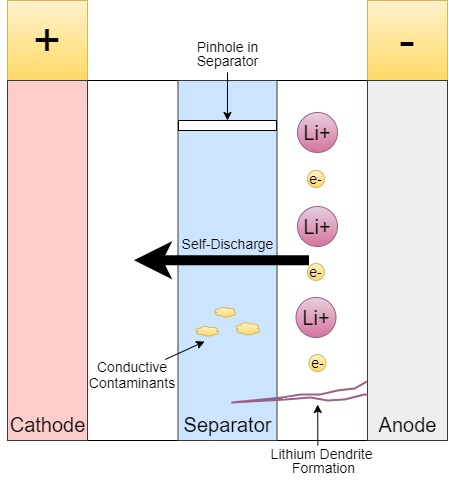

Rechargeable batteries are appearing in more devices than ever before. We are requiring these batteries to hold more energy, last longer and charge faster. This is even more critical in applications such as electric vehicles, where batteries must perform to the highest standards while remaining small and lightweight. This makes EV battery testing critical to catch failures in the batteries before they are placed in a product.
What is Self-Discharge?
Lithium-ion batteries produce electricity when a chemical reaction occurs on the anode, releasing ions and electrons that travel to the cathode. The opposite occurs when the battery is charged, lithium ions move from the cathode and collect at the anode. Ideally, the reaction that occurs on discharge is prevented from occurring when the battery is completely disconnected from a circuit. This is not true for practical batteries.
Self-discharge refers to the tendency of a battery to discharge over time, even when nothing is connected to the terminals. This internal current is usually very small, but defects in the battery can cause higher current to flow. The defects can originate from a number of places in the manufacturing line, including conductive contaminants on the electrodes or separator, pinholes in the separator or micro-shorts due to dendrite formation during cycling. A battery with higher self-discharge current will not hold charge at the same level as the other batteries in a pack, leading to reduced performance and increased likelihood of failures.

Measuring Self-Discharge
It is challenging to measure the self-discharge current of the battery directly, as any load on the battery will cause the battery to discharge which changes the measurement. We can characterize the self-discharge behavior of the battery by monitoring the open circuit voltage. The open circuit voltage reflects the state of charge of the battery and will decrease as the battery self-discharges. A defective battery that is charged and allowed to rest will have larger changes in the open circuit voltage over time.

The Keithley DMM7510 is a great option to observe the self-discharge behavior of the battery by monitoring changes in the open circuit voltage. Depending on the discharge current in the battery, it can take days to weeks to see a significant change in the battery’s open circuit voltage. The DMM7510’s 7.5 digit resolution ensures that you can detect smaller changes in the battery’s open circuit voltage, saving valuable test time. On the 10 V measure range, the DMM7510 can measure single microvolts. The DMM7510 is also highly accurate, with an accuracy of 14ppm* on the 10V range, so you can make reliable and repeatable readings. The DMM7510 is equipped with powerful TSP scripting capability so you can easily automate the measurement and data analysis such as pass/fail criteria. The DMM7510 makes measuring self-discharge behavior simple, allowing you to spend less time identifying faulty batteries and more time producing.
*14ppm of reading + 1.2 ppm of range, 10 V range at 1 year


